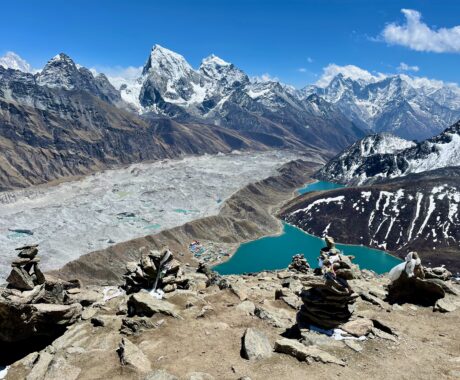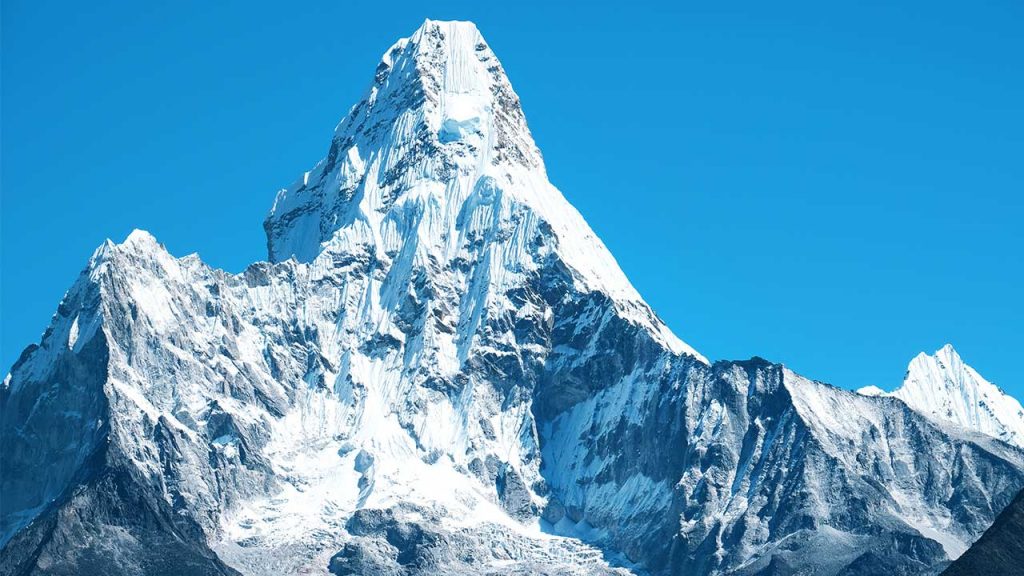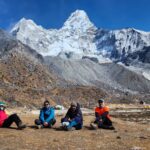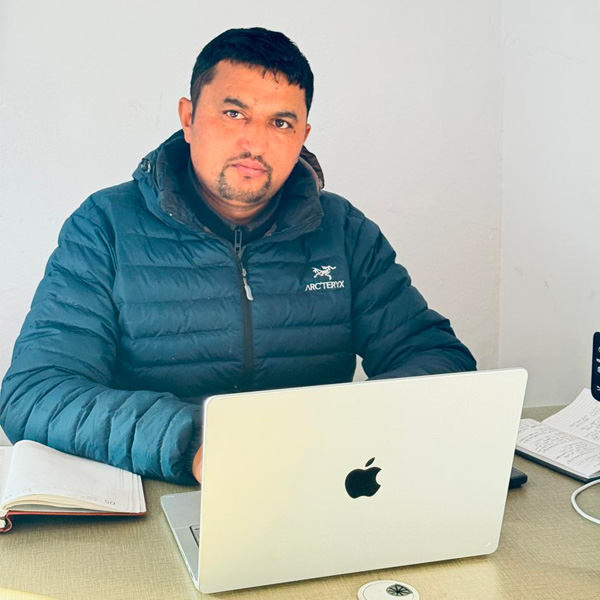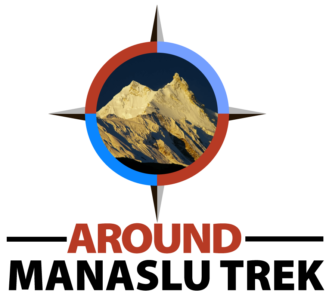Ama Dablam Expedition
Trip Facts
- Destination Nepal
- Activity Expedition
- Duration 35 Days
- Trip Difficulty challenging
- Max. Altitude 6890m
- Best Time Aug to oct & March to june
- Start and End Kathmandu - Kathmandu
- Meals Breakfast / Lunch / Dinner
- Accommodation 3 to 5 star hotel in Kathmandu & tea house / Camping
- Group Size 2 - 10
- Transportation Private transport & Flight Ticket
Trip Highlights
- Surround yourself with some of the highest mountains in the world
- Climbing one of the most beautiful mountains in the world at 6,812m
- An exquisite flight from Kathmandu to Lukla
- Learning about the Sherpa culture and traditions via interaction with them
- Visiting Tengboche Monastery, the largest monastery in the Khumbu area
- Exhilarating and demanding encounters with rock and ice climbing
Introduction
Although Ama Dablam is far lower than the highest peaks in the Himalayas at 6,812 meters above sea level, ascending it is nevertheless considered a significant accomplishment by the mountaineering community.
One of the most beautiful mountains in the world, Ama Dablam, sometimes referred to as the “Matterhorn of the Himalaya,” is situated in the Himalayan range in Eastern Nepal. Ama Dablam defines itself with its rare pyramid form.
The hanging glacier symbolizes the Dablam, the traditional double-pendant that Sherpa women wear, which is believed to depict a portrait of a deity. The long ridges on the east side represent the arm of a mother (ama) guarding her child.
Numerous climbing routes on the Ama Dablam have previously been investigated. However, the Southwest Ridge ascending path is more well-liked compared to other routes since it is slightly simpler and offers more breathtaking vistas.
Technical climbs on the granite rock formation’s narrow ridge edges are located in Camps I through II. Continue the difficult climbs over snow, rock, and slippery mushroom ridge from Camp II to Camp III. The ascent to Ama Dablam’s pyramid-shaped peak begins from Camp III.
The greatest time to climb Mount Ama Dablam is in the spring, from April to May. The second-best season is from the end of September to the end of November in the fall. Before considering Ama Dablam, one needs to practice rock and ice climbing techniques and acclimate to high elevations.
The Ama Dablam Expedition is for you if you have climbing expertise and want to go with a group to the most amazing peak in the world. Mount Amadambla is recognized as a treasure in Nepal’s Himalayas. From the Ama Dablam trek, one may see the Himalayan peaks of Mt. Everest (8848.86 meters), Mt. Lhotse (8516 meters), Mt. Makalu (8463 meters), Mt. Ch Oyu (8201 meters), and others.
Best seasons
You might be asking when is the best time to climb Ama Dablam in Nepal if you’re organizing an expedition to reach the summit. We’ll go over what to expect in each season so you can pick the one that most closely matches your tastes and style.
Spring (March to May)
Trekking and climbing excursions are best enjoyed in the region during the spring. The breathtaking season offers you a full 360-degree picture of the mountains covered with snow. Because of the consistent weather, spring is a great season to go on an excursion to Ama Dablam.
Climbers have fewer difficulties during this season than they do during the other seasons. There are a ton of wildflowers in bloom everywhere, and the area is covered with lush flora. The pathways are lined with fir, pine, and rhododendron trees. The area is home to a variety of uncommon and endangered animals that are emerging from hibernation.
Summer/Monsoon (June to August)
The off-season in the area is summer/monsoon. The region is seeing a lot of rainfall this season, among other difficulties. The section is still covered in clouds, and the sky is still cloudy.
Particularly in the lowest regions of the area, the Ama Dablam route may get quite slick. In the area, the Ama Dablam expedition is hazardous and not the best decision.
Fall / Autumn (September to November)
Most of Nepal’s summits draw a large number of climbers in the fall. Autumn is a warm and safe time to climb the Ama Dablam summit. There is less precipitation and weather-related difficulties in the area, and the weather is generally steady. Reaching the summit of the mountain will provide climbers with an exciting and safe experience.
Winter (December to February)
- Another off-season for travel is the winter. The lovely ascent is not the best during the winter off-season, Winter trekking is undoubtedly best suited for expert trekkers
- The weather is fickle, and snow may cause paths to shift in a matter of hours. There’s a good chance of bright skies, and as snow drifts in, the landscape is transformed every day
- As a result, reaching the summit in the winter becomes quite difficult. Other winter time difficulties include snowstorms and a lot of snowfall
Ama Dablam Expedition Difficulty
- With a complex approach, including ice climbing, rock climbing, and high-altitude mountaineering, Ama Dablam is regarded as a difficult peak to climb
- Technical climbing gear, including ropes, ice axes, crampons, ice screws, cams, and jumars, are needed for this adventure
- As you approach camp one, the climbing adventure gets harder. You will have to ascend the snowy cliffs and traverse many narrow slopes from camp one. After passing through Camp 2, you will come to a 15-meter pitch. One of the hardest and trickiest sections of the climb is this pitch
- The ascent to Ama Dablam’s pyramid-shaped peak begins from Camp III
- A high degree of technical proficiency, expertise, and physical fitness will be needed for this trip. It will be simpler for climbers with more experience to adjust to the technical demands of this adventure
- Before climbing Ama Dablam, climbers must have considerable expertise at high altitudes
- The Southwest Ridge segment route is the one taken by commercial expeditions to Ama Dablam the most frequently. The Ama Dablam expedition has a difficult classification of TD / 5
- On the SAC mountaineering scale, it means very hard, which entails constant belaying in tough locations
- Because of the freezing temperatures, climbers attempting the amazing ascent run the risk of frostbite. The local temperature might go as low as -20 degrees
Itinerary Outline
Day 01: Arrive in Kathmandu and transfer to hotel -1,300m
Day 02: Kathmandu sightseeing – 1,300m
Day 03: Fly to Lukla 2,810m, – 20 min then make the trek to Phakding 2,610m – 03 hrs
Day 04: Phakding to Namche Bazaar 3,440m/11,283ft – 06 hrs
Day 05: Namche Bazaar: acclimatization day 3,450m – 04 hrs
Day 06: Namche Bazaar to Dingboche 4,410m – 07 hrs
Day 07: Dingboche to Pheriche 4,300m/14,107ft – 02 hrs
Day 08: Day of Acclimation – 4,200m
Day 09: Pheriche to Ama Dablam Base Camp 4570m/15000ft – 05 hrs
Day 10: Pre-climb training and acclimatization at Ama Dablam Base Camp
Day 11-25: Ascending and Descending of Ama Dablam
Day 26-27: Trek to Lukla 2810m – 08 hrs
Day 28: Flight to Kathmandu – 1,300m
Day 29: A day of leisure in Kathmandu – 1,300m
Day 30: Departure home land – 1,300m
Alternative Treks & Climbs Around Ama Dablam Expedition
If you’re fascinated by Ama Dablam’s dramatic beauty but want to explore a different challenge, there are some incredible alternatives that still take you deep into the heart of the Himalayas. Whether you’re looking for a technical climb, a high-altitude trekking peak, or a legendary Himalayan journey, here are some fantastic options to consider:
- Mt. Everest Expedition – 60 Days: The ultimate climbing challenge. For seasoned mountaineers aiming for the world’s highest peak, Everest offers the most legendary ascent on Earth.
- Mera Peak Climbing – 17 Days: A great choice for those looking to step into high-altitude climbing. Mera offers sweeping views of five 8,000m peaks without the technical difficulty of Ama Dablam.
- Everest Base Camp & Lobuche Peak Climbing – 18 Days: Blend adventure and altitude by trekking to Everest Base Camp and summiting Lobuche — a stunning peak with just enough challenge to feel truly rewarding.
Detailed Itinerary
-
Day 01: Arrival in Kathmandu Airport, pickup to hotel - 1,300m
Altitude: 1300mMeals: BreakfastAccommodation: 3 to 5 star hotel in Kathmandu -
Day 02: Sightseeing in Kathmandu - 1,300m
Altitude: 1300mMeals: BreakfastAccommodation: 3 to 5 star hotel in Kathmandu -
Day 03: Sightseeing in Kathmandu ,Expedation permits making days.
Altitude: 1300mMeals: BreakfastAccommodation: 3 to 5 star hotel in Kathmandu -
Day 04: Fly From Kathmandu to Lukla 2800m - 30 min Trek to Phakding 2610m - 03 hrs
Altitude: 2600mMeals: Breakfast / lunch / DinnerAccommodation: Tea house -
Day 05: Trek to Namche Bazar 3450m - 08 hrs
Altitude: 3450mMeals: Breakfast / lunch / DinnerAccommodation: Tea house -
Day 06: Rest day in Namche Bazar 3,400m - 05 hrs
Altitude: 3450mMeals: Breakfast / lunch / DinnerAccommodation: Tea house -
Day 07: Trek to Tengboche 3,900m - 06 hrs
Altitude: 3900mMeals: Breakfast / lunch / DinnerAccommodation: Tea house -
Day 08: Trek to Demgboche 4,400m - 06 hrs
Altitude: 4410mMeals: Breakfast / lunch / DinnerAccommodation: Tea house -
Day 09: Rest Day in Dengboche. 4,400m - 05 hrs
Altitude: 4410mMeals: Breakfast / lunch / DinnerAccommodation: Tea house -
Day 10: Trek to Louche 4,900m - 06 hrs
Altitude: 4900mMeals: Breakfast / lunch / DinnerAccommodation: Tea house -
Day 11: Trek to Gorakshep 5,170m - 04 hrs and Hike to Everest Base camp 5,364m - 04 hrs
Altitude: 580mMeals: Breakfast / lunch / DinnerAccommodation: Tea house -
Day 12: Moring Hike to Kalapatther 5,555m back to Pheriche 4,200m -07 hrs
Altitude: 4200mMeals: Breakfast / lunch / DinnerAccommodation: Tea house -
Day 13: Trek to Ama Dablam base camp
Altitude: 4600mMeals: Breakfast/lunch/DinnerAccommodation: Camping -
Day 14 to Day 28: Summit Time.
Altitude: 4600mMeals: Breakfast/lunch/DinnerAccommodation: Camping -
Day 29: Trek back to Pangboche 4,000m - 04 hrs
Altitude: 4000mMeals: Breakfast / lunch / DinnerAccommodation: Tea house -
Day 30: Trek to Namche 3,400m - 08 hrs
Altitude: 3450mMeals: Breakfast / lunch / DinnerAccommodation: Tea house -
Day 31; Rest day in Namche - 3,450m
Altitude: 3450mMeals: Breakfast / lunch / DinnerAccommodation: Tea house -
Day 32: Trek to Lukla.
Altitude: 2810mMeals: Breakfast / lunch / DinnerAccommodation: Tea house -
Day 33: Fly from Lukla to Kathmandu.
Altitude: 1300mMeals: Breakfast / lunch / DinnerAccommodation: 3 to 5 star hotel in Kathmandu -
Day 34: Rest day in Kathmandu - 1,300m
Altitude: 1300mMeals: Breakfast/lunch/DinnerAccommodation: 3 to 5 star hotel in Kathmandu -
Day 35: Departure from Kathmandu Airport -1,300m
Altitude: 1300mMeals: Breakfast
What's included
- Arrival & Departure: Airport Transfer-Airport/Hotel/Airport
- Accommodation: 4 nights at a prestige Hotel in Kathmandu on bed & breakfast Basis
- Domestic Transportation: Kathmandu/Lukla/ Kathmandu
- Permits: Ama Dablam expedition permit, National park & Entry permit
- Food & Lodging: 3 meals a day while Trekking & at Basecamp for members & Staffs
- Base Camp Staff: Base camp Cook & Kitchen Assistants
- Porters: Porters per member up to Base camp & back from Basecamp
- Heater: Heater for base camp at each Dining and other necessary camps
- Light: 1 Solar panel for charging battery and lighting at base camp
- Dinner: 1 Farewell Dinner at a tourist-standard restaurant in Kathmandu with Nepalese staffs
- High Altitude Climbing Sherpa: 1 high altitude expert Climbing Sherpa per member
- High camp service: Essential cooking gas, cooking utensils, high altitude Sherpa, high altitude tent, high food, and fixing gear
- Hot drinking water: Facility of hot drinking water as per requirement
What's not included
- International airfare to and from Kathmandu.
- Nepalese Visa charges
- Extra night in Kathmandu: Extra night accommodation in Kathmandu. In case of early arrival or late departure, early return from the expedition (due to any reason) than the scheduled itinerary.
- Insurance: Travel and High Altitude Insurance / Accident / Medical / emergency evacuation
- Sherpa summit Bonus: Mandatory – Minimum USD 600+
- Tips: Please calculate some tips for Basecamp staffs and porters
- The full set of Member's personal climbing equipment & clothing
- Rescue Evacuation: Emergency rescue evacuation cost, if needed, and all other expenses of personal nature
Trekking Gears
Before embarking on the Everest Base Camp Trek, it is crucial to meticulously pack the necessary clothing and gear, while also acquiring general knowledge about the trekking areas. As is well-known, the majority of trekking routes in Nepal commence from the subtropical region and ascend through the sub-alpine zone, eventually reaching the alpine zone above 4000m.
For instance, the ultimate destinations of many trails in the upper Khumbu region include Everest Base Camp, Kalapatthar, Gokyo, and the three high passes. All these locations are situated at altitudes exceeding 4,800m above sea level. Several treks initiate from various points such as Kathmandu, Lukla, Jiri, Bhandar, Salleri, Khari Khola, or Thame Dada.
To ensure a safe and comfortable trek in the Himalayan region, it is highly recommended to bring the appropriate equipment and gear to cope with the cold temperatures. The following is a list of essential equipment and gear, which can be purchased either in the Thamel market or brought from your home country
The following basic checklist for trekking and hiking equipment should assist you in packing for our trips. Keep in mind the importance of minimizing the weight of your clothing and gear. Your packed trek bag should weigh less than 15 kilograms. Remember, this is merely a guideline and not everything listed is essential to bring.
- Lightweight thermal gloves
- Hiking boots
- 2 pairs of thin and 2 pair of thick woolen socks.
- Trekking trousers
- Waterproof (trousers / jacket)
- Base layer shirts
- Underwear (4)
- Sun hat or scarf
- Thin, lightweight (inner socks) (4)
- Head lamp ,spare bulbs, & batteries
- Small padlock to lock trek bag
- Plastic bags - for keeping items dry inside trek bag
- Small wash towel
- Basic First Aid Kit
- Sun protection (including total bloc for lips)
- Trekking poles
- Down jacket
- Water bottle 1 liters
- Hand wash
- Snow glasses and sunglasses
- Duffle bag or kit bag to carry to gear while trekking.
Additional Equipment Checklist
- Headband or Beanie
- Swiss army knife
- Lip guard
- Sun lotion
- Scarf or neck Band
- Rain jacket/ Umbrella
What Not To Pack?
- Jewelry and valuables things, Heavy zoom lenses for your camera, Too many cotton clothes/ more than one pair of jeans, Bulky towels
During Himalayan tours, including activities such as hiking, trekking, peak climbing, and expeditions, we strongly advise against bringing items such as jewelry, gold, excessive cash, large cameras, too many cotton clothes, thick towels, etc.
FAQs of Ama Dablam Expedition
-
What degree of fitness and skill set are necessary?
A high degree of technical proficiency, expertise, and physical fitness will be needed for this trip. Technical skills like ice climbing, rock climbing, and high-altitude mountaineering are necessary. -
Which season is best for the Ama Dablam expedition?
The greatest time to climb Mount Ama Dablam is in the spring, from April to May. This is also the ideal season for the Ama Dablam Expedition. The second best season is in the fall, from the end of September to the end of November. -
Who made Mount Ama Dablam's first ascent?
Mike Gill (NZ), Wally Romanes (NZ), Mike Ward (UK), and Barry Bishop (US) were the first climbers of Mount Ama Dablam via the Southwest Ridge. The date was March 13, 1961. -
What equipment is needed?
A decent mid-weight mountaineering harness, an ice axe, an ascender, meter slings, two locking carabiners, and four regular carabiners are all that we advise. Head torch(es) with additional batteries and your helmet. We strongly advise bringing three one-liter water bottles on summit day. Everything a party needs, including ropes, ice and rock protection, tents, stoves, food, gasoline, and walkie-talkies. -
How old can one become to climb Ama Dablam?
The youngest person who can climb is sixteen. No maximum age as long as you're in good health. -
What is the process for obtaining a Nepal visa and Ama Dablam expedition permits? How much do the permits cost?
Tourist Visa on Arrival for Visitors from most countries can obtain a tourist visa upon arrival at the Tribhuvan International Airport in Kathmandu or at certain land border crossings. You'll need a passport valid for at least six months, a passport-sized photo, and the visa fee. second Online Application ,Alternatively, you can apply for a tourist visa online through the official Nepal Department of Immigration website before your arrival. This can speed up the process at the airport.Visa from Nepalese Diplomatic Missions, You can also obtain a visa from Nepalese embassies or consulates in your country before departure. 15 days: $30 USD 30 days: $50 USD 90 days: $125 USD Ama Dablam Expedition Permits 400$To 500$ Perperson depends on sesaon we get this permits from NTB / NMB For the Ama Dablam expedition, you will need the following permits .Climbing Permit: Issued by the Nepal Mountaineering Association (NMA) or the Department of Tourism (DoT), depending on the climbing season and specific rules at the time of your expedition. Permit Costs: Climbing Permit for Ama Dablam: The cost varies by season. It ranges from $400 USD in the off-season (winter and summer) to around $500 USD in the peak season (spring and autumn). Sagarmatha National Park Entry Permit: Approximately $30 USD for foreigners. Khumbu Pasang Lhamu Rural Municipality Entrance Permit: Around $20 USD. Please note that prices can vary, and it's essential to check the most current information from official sources or your expedition organizer. Additional fees may include a garbage deposit (refundable if you bring back your trash) and costs for a climbing guide, porters, and potentially a liaison officer, depending on the size of your expedition. -
How much time is typically needed for this expedition, and how much will it cost?
The cost of an Ama Dablam expedition can vary widely depending on several factors, including the expedition company, the level of support and services provided, and the size of the group. Typically, the cost ranges from $7,000 to $9,000 USD per person, but it can go higher for more luxurious or private expeditions. This estimate includes permits, guide fees, porters, accommodation, and meals during the trek and climb but does not cover personal gear, international flights, travel insurance, and personal expenses. The duration of the expedition is typically 30 to 35 days, depending on weather conditions and the climbers' conditions. -
How high are Ama Dablam's Base camp, Camp 1, Camp 2, and Camp 3?
Ama Dablam base camp has 4700m we stay more then 10 to 15 day there, Camp 1 is 5700m, camp 2 6000m and Camp 3 is 6300m. -
Where is this mountain located, how technical is this mountain, and how famous is it for climbing?
Ama Dablam is located in the upper Khumbu region of Nepal, southeast of Mount Everest and within the Mahalangur Himalayan range. It is considered a technically demanding mountain for climbers, requiring strong ice climbing and rock climbing skills, as well as proficiency in navigating through steep snow and ice. The mountain is famous for its beautiful and unique pyramid shape, making it a coveted climb among mountaineers. It's known not just for the technical challenges it presents but also for the breathtaking views it offers of the Himalayan landscape, including views of Mount Everest, Lhotse, and Makalu. Ama Dablam's popularity among climbers stems from both its aesthetic appeal and the technical climbing experience it provides -
What exercise and training do we need for this mountain expedition?
Preparing for a mountain expedition, especially to a technically demanding peak like Ama Dablam, requires comprehensive physical preparation, including both exercise and training tailored to the challenges of high-altitude climbing such as running, cycling, and swimming are crucial for building cardiovascular health, improving your stamina, and enabling your body to perform well under reduced oxygen levels. If possible, incorporate hikes or climbs at altitude to acclimate your body to lower oxygen levels. Utilizing altitude training masks can also simulate high-altitude conditions to some degree, though real-world experience is more beneficial -
Why do people undertake the Mt. Ama Dablam expedition, and what is the best time to do it?
People undertake the Mt. Ama Dablam expedition for several reasons. It is not only a stunningly beautiful mountain but also presents a challenging climb that attracts experienced mountaineers. The unique pyramid shape of Ama Dablam and its dramatic ridges offer an enticing challenge, combining technical rock, ice, and snow climbing. Additionally, the expedition provides climbers with breathtaking views of the Himalayas, including close-up views of Mt. Everest, Lhotse, and Makalu. Successfully summiting Ama Dablam is considered a prestigious achievement in the mountaineering community due to the technical skills required. The best time to attempt the Mt. Ama Dablam expedition is during the post-monsoon autumn months of October and November when the weather is generally stable, and there is less precipitation. The skies are clearer, offering better views, and the temperatures are relatively moderate, making it safer and more comfortable for climbers. Another feasible window is during the pre-monsoon spring season in April and May, although the likelihood of encountering colder temperatures and snow is higher compared to the autumn season. -
Who summited Ama Dablam for the first time, and can normal people climb this mountain?
The first successful summit of Ama Dablam was achieved by an international team in 1961. The team comprised Mike Gill (New Zealand), Barry Bishop (USA), Mike Ward (UK), and Wally Romanes (New Zealand) on March 13, 1961.As for "normal people" climbing Ama Dablam, it depends on what is meant by "normal." If by "normal," you mean non-professional climbers without significant mountaineering experience, then Ama Dablam would be a very challenging and potentially unsafe objective due to its technical difficulties. Climbers need to have a solid foundation in technical rock and ice climbing, as well as experience with high-altitude mountaineering, to safely attempt Ama Dablam. -
In case of an emergency, what are the possibilities?
We have our own experienced team always with you, or at base camp, we offer many more services. These include a first aid kit, a team of doctors, guides and assistant teams, and an ambulance helicopter as well. Medical treatment is available at high-altitude camps." This revision clarifies the availability of comprehensive support and emergency services for climbers, ensuring safety and assistance throughout the expedition. -
What types of food and accommodation do we get in Kathmandu, during the tea house trek, and while climbing?
In Kathmandu, accommodations range from budget guesthouses to 5-star hotels, offering bed and breakfast options to fit any budget. The city's culinary scene is equally varied, serving traditional Nepali cuisine and international dishes. On the tea house trek, you'll find simple but cozy accommodations with attached rooms and Western toilets. Tea houses offer basic comforts like beds and blankets, and the food is hearty, supporting your trek with local and some Western dishes. During the climb, the team provides tent accommodations. Food becomes more practical, focusing on high-energy, easily digestible meals prepared by expedition cooks to meet the climbers' nutritional needs, including soups, noodles, and rice dishes. -
What insurance is required for trekking and climbing members and staff?
Normally, Nepali porters and guides are covered by insurance up to $10,000, and climbing guides are covered up to $20,000. For members, we recommend coverage ranging from $10,000 to $15,000. -
How many climbing guides are required for one client on this expedition?
Different companies and groups have different rules. In general, we provide a 1:1 ratio, but sometimes, depending on the client's condition and budget, we arrange for a 2:1 ratio or, if the client is strong enough, we offer a 2:1 ratio as well. This depends on the budget and services required. -
Do we always have our own oxygen, Gamow bag, and first aid kit?
Yes, we always have our basic and emergency items with us. Sometimes, you may have to pay, and sometimes we arrange the services. For example, we provide the first aid kit and Gamow bag. In some cases, helicopter rescue and hospital services are paid for by the client. -
How much should we tip our staff, like porters, guides, and climbing guides?
It depends on your budget and satisfaction, but all staff expect good tips. We believe our guests are gods. I mean, you should have a baseline for tipping: for trekking porters, start at $150 and up; for trekking and climbing guides, a minimum of $1000; and for other group staff, $500 -
Why is there a worship ceremony at base camp before any expedition? Is it for any specific reason?
In the Himalayas, we adhere to our natural worship rules in Nepal. We believe in nature and that it possesses both positive and negative spiritual powers; sometimes, it bestows positive and at other times negative energies. Those who are connected to nature in the original regions have this culture. We believe that God is always with us and surrounds us. If at that time we do things right, it is always good. For the best outcomes, according to the area, a prominent monk prays for wellness and happiness. If we make any mistakes, we apologize, asking for protection. That's why, before every expedition in Nepal and Tibet, we worship, appealing to different followers and gains. -
Why RP Adventures is different than others agency?
RP Trek offers an exclusive and high-end trekking experience with its expensive packages. The allure lies in the luxurious accommodations, highly qualified and experienced guides with excellent educational and medical training, ensuring a safe and enriching journey. Private ground transportation adds to the comfort, while the option of helicopter sharing for aerial transport, especially in remote areas, enhances the adventure. The commitment to quality services and safety justifies the elevated cost, providing clients with a truly premium and unforgettable trekking and tour experience. -
Do you have a budget package for the Ama Dabluma Expedation?
For the Ama Dablam expedition, we offer different prices and services. We provide base camp services, permit services, guide arrangement services, equipment arrangement services, and various other services for any adventure activities.
Trip You May Like
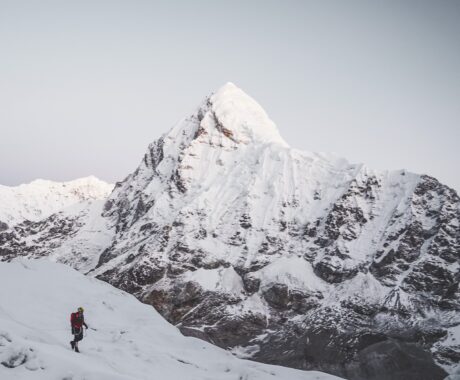
Pumori Expedition
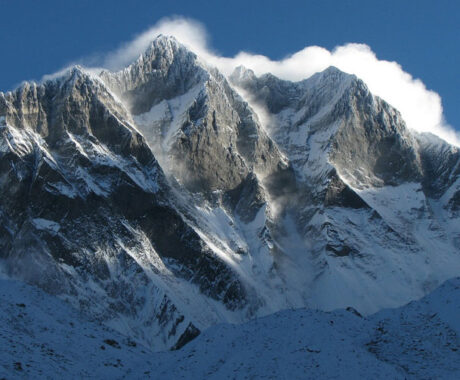
Mt Lhotse Expedition
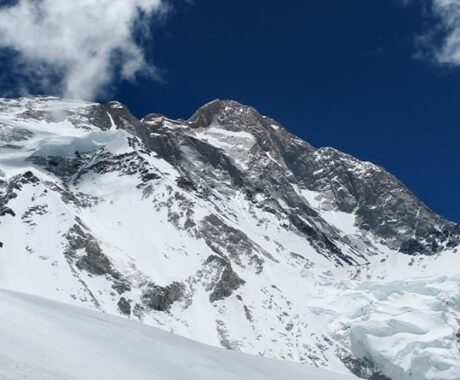
Mt Makalu Expedition
